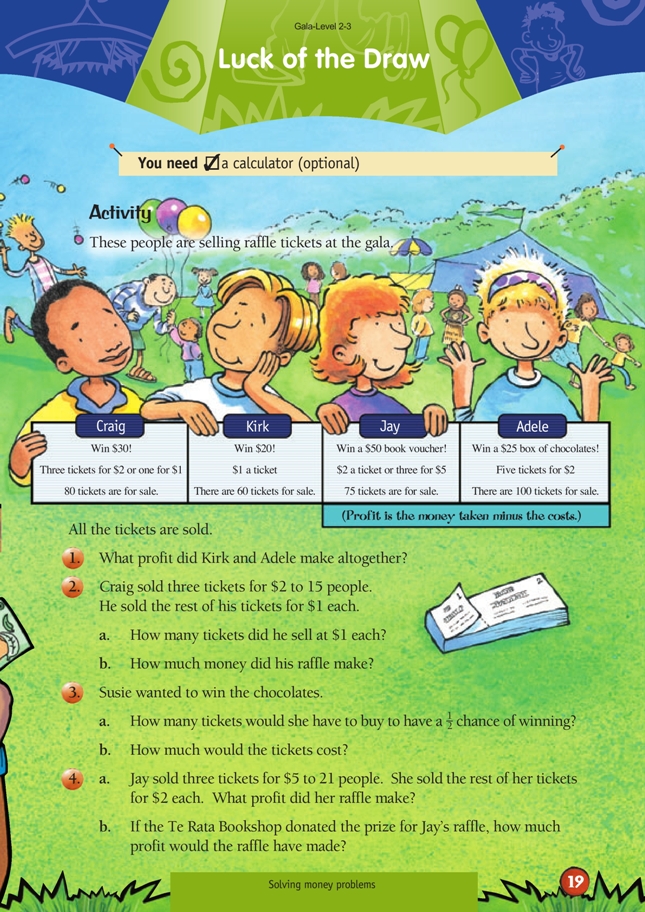This is a level 3 number activity from the Figure It Out theme series.
A PDF of the student activity is included.
Click on the image to enlarge it. Click again to close. Download PDF (369 KB)
solve word problems involving addition, subtraction and multiplication
A calculator (optional)
This activity involves a range of computational skills in a problem-solving context. It gives the students useful experience in choosing the appropriate computational strategy and keeping track of progress. Discuss with the students the concept of profit as the selling price minus the costs and illustrate this with appropriate examples. For example, for question 1:
Kirk sold 60 tickets at $1 each: 60 x $1 = $60.
He paid $20 for the prize: $60 – $20 = $40.
Kirk’s profit = $40.
Adele sold 100 tickets in lots of 5: 100 ÷ 5 = 20 lots of 5 tickets.
One lot of 5 tickets costs $2, so 20 lots of 5 tickets is 20 x $2 = $40.
The prize costs $25: $40 – $25 = $15.
Adele’s profit = $15.
Total profit: $40 + $15 = $55.
Thinking about procedures and organising data are the key aspects of this question, so make calculators readily available for the computational parts of the question. Encourage the students to systematically record each step and explain their reasoning for it.
At this level, the students will have explored chance by investigating games or discussing real world events, such as the weather. Discuss the idea of even chance (for example, a 50–50 chance or half chance) compared with certain chance or no chance. For example, for question 3, Susie would need to buy 50 (half) the tickets to give her a 50/100 or 1/2 chance of winning. To buy 50 tickets, she spends 10 x $2 = $20, which is only $5 less than the value of the chocolates. Your students might like to debate the wisdom of buying the tickets. Would she be better off to spend $25 and be sure of getting the chocolates? But the purpose of the gala is to raise money, so she might be quite happy to spend a lot on raffle tickets.
Answers to Activity
1. Kirk’s profit is $60 – $20 = $40 $40 profit
Adele’s profit is $40 – 25 = $15 $15 profit
Their raffles made $55 profit altogether.
2. a. 35 tickets
b. Craig’s profit is (15 x 2) + (35 x 1) – 30 = $35
3. a. She would have to buy 50 of Adele’s tickets.
b. (50 ÷ 5) x 2 = $20
4. a. Jay’s profit is (21 x 5) + (12 x 2) – 50 = $79
b. $129
